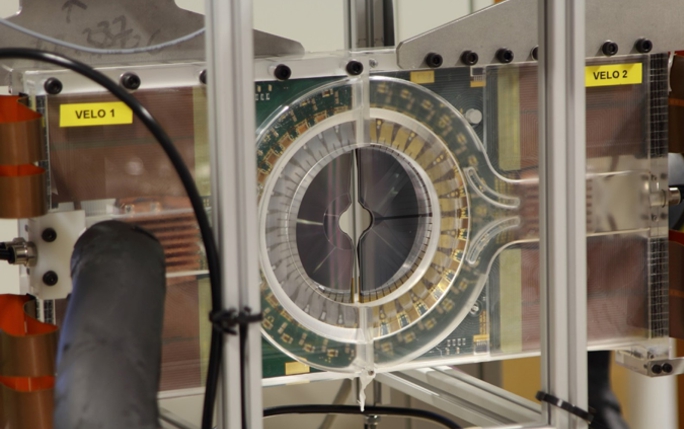Paper published on adaption of VELO detector to an online beam monitor

The first paper on the development of the LHCb VELO detector modules into a standalone, non-invasive online beam monitor for medical accelerators was published in the journal ‘Instruments’. This article is part of a special issue on "Beam and Patient Monitoring" based on the OMA topical workshop on “Diagnostics for Beam and Patient Monitoring” that was held in CERN, June 2018 and is available online https://www.mdpi.com/2410-390X/3/1/1/htm
The paper summarises the extensive work and necessary changes on the VELO detector to operate it as a standalone system outside of the LHC environment performed by Liverpool researcher Roland Schnuerer. Build on the cooling, venting and positioning system designed by former QUASAR member Tomasz Cybulski, several hardware and software changes realised a synchronised readout with a locally constructed Faraday Cup and the RF frequency of a medical cyclotron with quasi-online monitoring. Further, co-author and OMA Fellow Jacinta Yap provided GEANT4 simulation that help observe the beam behaviour in the integration zone.
The adapted VELO module is now ready to be used and plans are made to integrate the detector at the 40 MeV proton research beamline in Birmingham in March. These tests will optimise the use of the detector for the 60 MeV proton therapy beamline at the Clatterbridge Cancer Centre (CCC), UK and the capability as a beam monitor will be assessed by measuring the beam current and by monitoring the beam profile along the beamline.